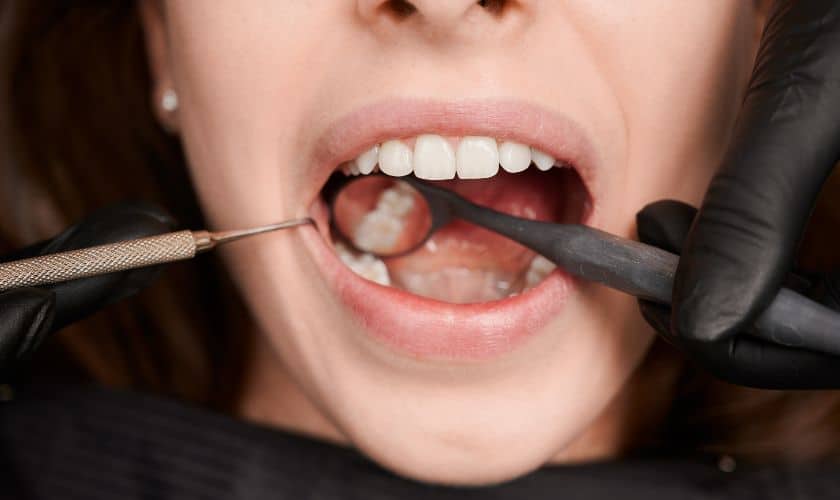Looking to protect your teeth from pesky cavities and tooth decay? Dental sealants may be just the solution you need! This simple, painless procedure of dental sealants involves coating the grooves on your teeth with a thin layer of protective material that keeps harmful bacteria at bay. But if you’re feeling nervous about undergoing this treatment, fear not – in today’s blog post, we’ll walk you through everything you can expect during the dental sealant process so you can feel confident and prepared every step of the way. Let's get started!
What are Dental Sealants?
Dental sealants are a plastic material that is usually applied to the chewing surfaces of the back teeth – the molars and premolars. Sealants protect these teeth from decay by sealing out food and plaque. The sealant will eventually wear away, but it can be reapplied as needed.
The procedure for getting dental sealants is quick and easy. First, the teeth are cleaned and dried. Then, a gel is applied to the chewing surfaces of the teeth. Next, the sealant is applied to the gel and allowed to harden. Finally, any excess material is removed and the teeth are polished.
The entire procedure takes only a few minutes and does not require any numbing or anesthesia. There may be some sensitivity immediately after the procedure, but this should go away quickly.
The Procedure for Getting Dental Sealants
A dental sealant is a clear or white coating that is applied to the chewing surfaces of the back teeth — the molars and premolars. Sealants protect these teeth from cavities by sealing out food and bacteria. The procedure for getting dental sealants is quick and easy and usually does not require anesthesia. Here’s what you can expect:
First, your dentist will thoroughly clean your teeth. Then, he or she will dry your teeth and apply an acidic solution to help roughen up the surface of your tooth enamel. This will help the dental sealant bond to your tooth. Next, your dentist will rinse off the acidic solution and dry your teeth again.
Then, he or she will apply the dental sealant material to your tooth enamel using a small brush. Once all of your teeth have been coated with the sealant material, your dentist will use a special blue light to harden (cure) the material. Finally, your dentist will check to make sure that the sealants are properly bonded to your teeth and that there are no air pockets.
The entire procedure takes about 30 minutes, and there is no pain or discomfort involved. Your sealants should last for several years before they need to be replaced.
The Benefits of Dental Sealants
There are many benefits of dental sealants. They can help to prevent cavities, protect against tooth decay, and make it easier to keep your teeth clean. Sealants can also help to improve the appearance of your smile and make it easier to floss your teeth.
Are There Any Risks Associated with Dental Sealants?
There are very few risks associated with dental sealants. In fact, they are one of the safest and most effective ways to prevent tooth decay. The only real risk is if the sealant is not applied properly and does not adhere to the tooth. This can allow bacteria and plaque to build up under the sealant and cause tooth decay.
How Long Do Dental Sealants Last?
Dental sealants are a great way to
protect your teeth from cavities, but you may be wondering how long they last. The good news is that dental sealants can last for many years with proper care. However, it is important to note that sealants may need to be reapplied or replaced over time.
To get the most out of your dental sealants, it is important to practice good oral hygiene habits. This includes brushing twice a day, flossing daily, and visiting your dentist regularly for checkups and cleanings. Additionally, avoid chewing on hard foods or objects as this can damage the sealant material.
If you take good care of your dental sealants, they can last for several years before needing to be replaced. However, if you do not practice good oral hygiene habits, the sealants may only last for a few months. If you have any questions about how to care for your dental sealants, be sure to ask your dentist.
Conclusion
Getting dental sealants is a swift and painless procedure that can help protect your teeth from cavities and decay for up to ten years. By following the steps outlined above, you will be able to understand exactly what to expect when getting dental sealants. From placing the protective material over your teeth, to reviewing how long it takes for them to set, you should now know everything needed about this important preventive measure. Talk with your dentist if you have any further questions or concerns about getting dental sealants!
FAQs
Is the procedure for getting dental sealants painful?
No, the procedure for getting dental sealants is quick and painless.
How long does the procedure take?
The procedure typically takes only a few minutes per tooth.
How are the teeth prepared for sealant application?
Before applying sealants, the dentist or dental hygienist will thoroughly clean and dry the teeth to ensure that the sealant adheres properly.
How are the sealants applied?
The sealant material is applied to the chewing surfaces of the teeth and then hardened using a special light
How long do dental sealants last?
Dental sealants can last up to 10 years with proper care and maintenance.


